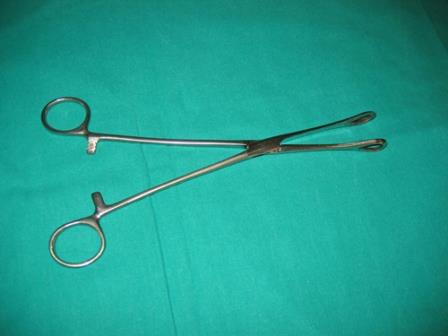In surgical settings, sponge holders play an essential role in ensuring a safe and sterile environment during procedures. These holders are specifically designed to hold surgical sponges, which are used to absorb bodily fluids and maintain a dry surgical field. Here are some of the most common types of sponge holders used in surgery:
- Ring-Handled Sponge Holder: This type of sponge holder has a spring-loaded jaw that opens and closes with a ring handle. The sponge is placed between the jaws, and when the handle is released, the jaws close around the sponge, holding it in place. This type of sponge holder is commonly used for abdominal surgeries and can hold multiple sponges at once.

- Foerster Sponge Forceps: These sponge holders are long, straight forceps with a serrated tip. The forceps can be locked in place, holding the sponge securely during the procedure. These sponge holders are commonly used for surgical procedures where access is limited, such as in the nose or throat.
- Allis Tissue Forceps: These sponge holders are curved forceps with teeth on the tips. The teeth hold the sponge in place, preventing it from slipping during the procedure. These sponge holders are commonly used for surgeries where tissue needs to be retracted.
- Kelly Hemostatic Forceps: These sponge holders are curved forceps with a locking mechanism that holds the sponge in place. The serrated tip provides a secure grip on the sponge, preventing it from slipping during the procedure. These sponge holders are commonly used for surgeries where bleeding needs to be controlled.
- Babcock Intestinal Forceps: These sponge holders are curved forceps with a rounded tip. The rounded tip holds the sponge in place without damaging tissue. These sponge holders are commonly used for intestinal surgeries and can hold multiple sponges at once.
- Backhaus Towel Clamps: These sponge holders are small, straight forceps with pointed tips that are used to hold towels or drapes in place during the procedure. These sponge holders are commonly used for surgeries where large areas need to be covered to maintain a sterile field.
In conclusion, sponge holders used in surgery are specifically designed to hold surgical sponges in place, maintaining a dry and sterile surgical field. The type of sponge holder used depends on the surgical procedure and the surgeon’s preference. Each type of sponge holder has its advantages and disadvantages, so it is important to choose the one that best meets the surgical needs.